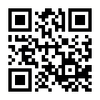文章基本信息
- 标题:La dinámica de la autoimagen de los Estados Unidos a través de los discursos públicos
- 本地全文:下载
- 作者:I.Y. Kiselev - A. Smirnov
- 期刊名称:Psicología Política
- 印刷版ISSN:1138-0853
- 出版年度:2004
- 期号:28
- 页码:55-68
- 出版社:Promolibro
- 摘要:
En este artículo se interpretan los resultados de la investigación realizada sobre la autoimagen de los EE.UU. tal como se presenta en los discursos de investidura de los presidentes americanos durante el período 1945-2001. Partimos del supuesto de que existiría un predominio declaraciones de identidad y establecimos dentro de este modelo de autoidendad de los Estados Unidos dos submodelos: el de identidad-rol (1945-1985) y el de identidad-posición (1985-2001). La visión del mundo que transmiten los mencionados discursos no sufre cambios importantes después de la desaparición de la URSS y el fin de la Guerra Fría. Solamente se produjeron cambios en las tácticas como el componente de creencias instrumentales: la estrategia de la política extranjera se mantiene igual. Desde esta perspectiva se puede decir que la percepción de los cambios en el mundo sólo parece posible cuando se producen cambios en la autoimagen de un estado.
- 其他摘要:
In this article we discuss the results of research dealing with the study of the self-image of the USA as it is presented in the inauguration speeches of the American presidents during the period 1945-2001. We posit the dominance of identity statements and within this identification pattern of the USA self-image two subpatterns: identity-role (1945-1985) and identity-status (1985-2001). The worldview constructed in the inauguration speeches does not undergo substantial changes after the collapse of the USSR and the end of the Cold War. These events produced only changes in tactics as the component of instrumental beliefs: foreign policy strategy remains the same. Following this line of reasoning we come to the conclusion that perception of the changes in the world seems possible only when there are transformations in the self-image of a state.
- 其他关键词:USA ;self-image (1945-01); foreign policy; identity-role; identity-status; public ;speeches

